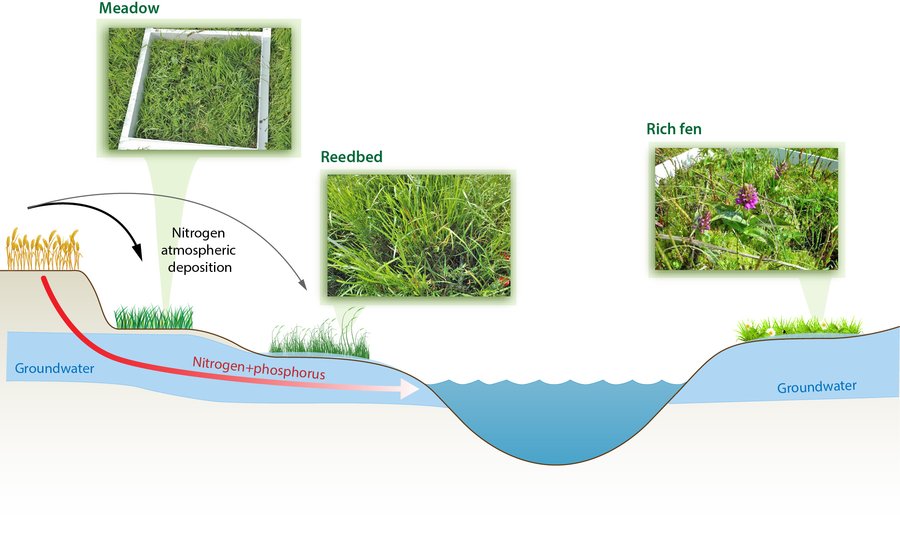Riparian wetlands, in their natural state, often have high biodiversity. However most of the Danish wetlands have been seriously degraded or even completely destroyed due to drainage and eutrophication. The main reasons for these degradations are agricultural activities. For example, ditch and tile drainage together with the leaching of nutrients derived from fertilizers may alter the composition and diversity of the vegetation in the wetlands.
Therefore we studied the parameters influencing vegetation communities in riparian wetlands with a special focus on how wetland restoration can be used as tool to improve biodiversity in wetlands.
Main findings
Although overall water quality can be improved when diverting nutrient contaminated waters toward wetlands, this can decrease vegetation diversity in the receiving wetlands.

The vegetation in Danish wetlands is often degraded, mostly because of agricultural activities and the use of fertilizers. Nitrogen is transported to the wetlands by the groundwater or by atmospheric deposition. This impact the biodiversity and ecological value of the wetlands. For example, Danish wetlands often present meadow or reed bed vegetation whereas valuable vegetation like rich fen vegetation is seldom because it requires low nutrient inputs and high and constant groundwater table. As a result, rich fen vegetation can now be found only in areas located further away from agricultural activities (see here).